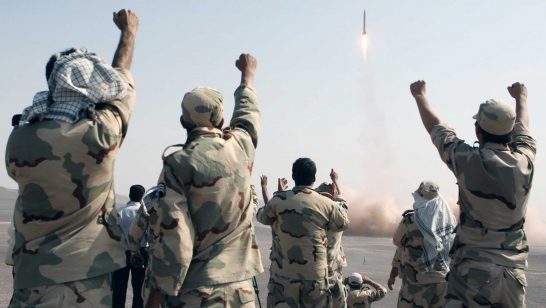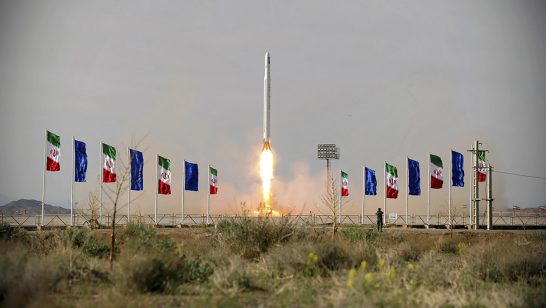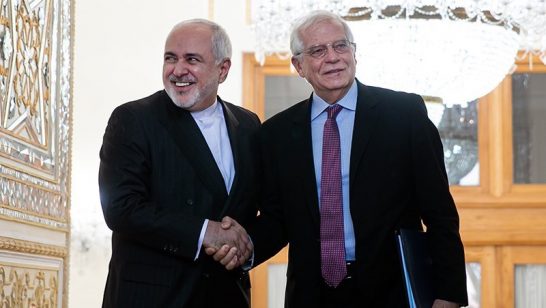
In the United States, Europe, and the Middle East, a debate has emerged over the last few months on whether US President-elect Joe Biden should aim to get “more” out of Iran before re-entering the 2015 nuclear deal (JCPOA). Some believe that Biden has been gifted with leverage from the Trump administration’s sanctions pressure that could help gain concessions on Iran’s missile programme. Others contend that the gutting of US and European credibility in Iran over the past four years – and the subsequent loss of trust – means that even if leverage does exist, the conditions to use it in a results-oriented negotiation with Iran do not.
While it is now clear that the President-elect will wisely stick to re-entering the nuclear agreement as a first priority, his incoming National Security Advisor Jake Sullivan recently stated that Iran’s ballistic missiles will need to be “on the table” during follow-on talks. If these talks are to be productive, the US and its allies in Europe and the Middle East must set out their priorities more clearly on what they seek to achieve and think through the incentives that could be brought to bear.
Once deemed little more than pariah states’ favourite toys and potential nuclear delivery systems, ballistic missiles have been turned into a powerful conventional military capability through the proliferation of precision-guidance missile technology. Easy to hide and exceptionally hard to intercept, ballistic missiles offer countries a potent tool against otherwise technologically superior adversaries. It is exactly for this reason that Iran has invested substantial resources into its ballistic missile programme for more than three decades.
Over time, missiles and foreign, non-state armed groups have converged into a central pillar of Iran’s asymmetric defence capability. Iran’s display of ballistic missiles during last week’s Payambar-e Azam 15 (The Great Prophet 15) war games is the latest iteration of the prominent role these systems also play in regional power projection. For Iran’s regional rivals, Iran’s missiles – and its ability to transfer missile technology to non-state actors on their borders – present a more immediate threat to their security than its nuclear programme does. But in contrast to nuclear weapons, there is no agreed international regime to control ballistic missiles, which means the discussions about missiles are starting from a very different place.
Unilateral demands for Iran to curb its missile programme will not work without understanding and addressing the larger picture of regional security. Missiles are now seen in Iran as a prime guarantor of national security, making negotiating constraints on them a highly sensitive topic. Deeply rooted in their experiences of the eight-year Iran-Iraq War and regional politics in the decades afterwards, existential military threats are not a distant possibility but a lived reality in the minds of the Islamic Republic’s elite.
At what price would Iranian elites agree to restrict what many of them see as their country’s main deterrent and insurance against regime change? And who would guarantee limitations would not be a slippery slope to further restrictions of military capabilities? Iranian leaders regularly cite the examples of Iraq and Libya, both of which agreed to limitations to their missile force only to have their regimes subsequently overthrown by Western-led or supported military interventions. It, therefore, comes as no surprise that Iran’s Supreme Leader, president, and top military officials have continually declared negotiations on their missiles a red line.
Tehran’s strong views on missile negotiations are not the only obstacle ahead. While there is a variety of voices calling for including missiles in talks with Iran from now or sometime soon, rarely if ever, is it discussed what concrete, technical outcomes they are looking for. What exactly is to be restricted? Iran’s ability to deliver a hypothetical nuclear warhead? The numbers of missiles produced and deployed? Development of newer, more technically advanced systems?
Considering the complete absence of trust in the region, any agreement would need to have powerful verification mechanisms that might not always be realistic to achieve. Limiting the number of missiles Iran produces and deploys would require intrusive inspections and monitoring of military bases and production facilities, which Iran would likely never accept. Ridding Iran of potential nuclear delivery systems seems equally unfeasible. Iran’s Shahab 3/Ghadr missile, which would be the system of choice for such a task, not only forms the backbone of Iran’s ability to retaliate against potential Israeli attacks but is also a proven system that has been in mass production for a long time.
Absent a vast and massively intrusive inspection effort, verifying that Iran does not retain a basic nuclear delivery capability seems all but impossible. Restricting flight-testing, which can be monitored non-intrusively, seems to be the only feasible way of verification. But this would limit potential restrictions to the improvement of existing systems and the development of new ones. Even if all of these challenges would be somehow overcome, it remains questionable whether the limited restrictions that could be realistically achieved would be enough of a concession to garner the support of US Iran hawks and regional allies.
As if these obstacles were not formidable enough, there is yet another potential challenge – Iran’s ability to escalate in the missile field. In the past two decades, Iran’s missile industry has made breathtaking technological advances, yet Iran decided to voluntarily restrict its missile range to 2000km – which still allows it to reach US bases in the region as well as most of its regional adversaries. While Iran might chisel at the edges of this self-imposed restriction, it so far has not tested any missile with a range to reach the United States nor an equivalent Space Launch Vehicle using militarily viable technology. However, there are worrying signs that Iran might already be working on such technology and could make faster progress than expected. Should the West increase its pressure on the missile issue, Iran might reply by escalating by testing missiles of longer ranges. As with nuclear research and development, the knowledge gained during such an escalation would not be reversible.
In sum, the demand many made to restrict Iran’s missile programme as a precondition to the US re-entering the JCPOA would have likely acted as a formidable spoiler. Even if it succeeded against all odds, the result would likely be either a toothless agreement or limitations that satisfy no one. Instead of concentrating on restricting Iran’s current missile programme, follow-on talks between the US and Iran should focus on preventing more provocative future developments in the form of potential ICBM flight testing, which would both address the US’s primary security concerns and be easily verified. Although not ideal, it would be valuable to work towards even an informal, face-saving understanding that Iran will reinforce its 2000km range cap and limit the use of militarily viable fuel technologies in its space programmes. A complementary understanding to limit or stop the provision of certain systems to non-state actors, such as ballistic and cruise missiles given to the Houthis, might be another avenue worth exploring.
The concerns that America’s allies in the region share should not be ignored, but the US and its partners need to find a different way of addressing them while also taking Iran’s threat perceptions into account. A few years ago, former US National Security Advisor John Bolton was widely derided for wanting to apply the “Libya model” to North Korean disarmament. Yet, all too often when talking about restricting Iran’s missiles people are thinking through a Libya-style prism as well – a pariah state under the pressure of sanctions will decide to come in from the cold and surrender a large part of its missile force. However, it seems dubious that such an approach can work with a middle power whose security in a volatile region largely depends on its sophisticated missile arsenal.
Perhaps it would be wise to take inspiration from the Cold War instead. Restricting Soviet military capabilities was not achieved by a sanctions-enabled quick fix but by mutually trading hard security concessions through long, laborious arms control negotiations and dialogue underpinned by confidence-building measures as well as military leverage. Doing so in the Middle East would be a monumental task given the number of actors and low levels of trust amongst them.
Yet, the forthcoming US return to the JCPOA might at least reduce the dramatic tension between the US and Iran and thus pave the way for positive initiatives on arms control in the region. In turn, Biden’s current plan to not hold a US return to the Iran nuclear deal hostage to other issues such as Iran’s missiles is a sensible and respectable approach to take. In order to reduce the risks resulting from the current conventional arms race and wider missile development and proliferation in the Middle East, creative, long-term strategic thinking will be required for future talks to bear fruit.
The opinions articulated above represent the views of the authors, and do not necessarily reflect the position of the European Leadership Network (ELN) or any of the ELN’s members. The ELN’s aim is to encourage debates that will help develop Europe’s capacity to address pressing foreign, defence, and security challenges.
Image: Tasnim News Agency




